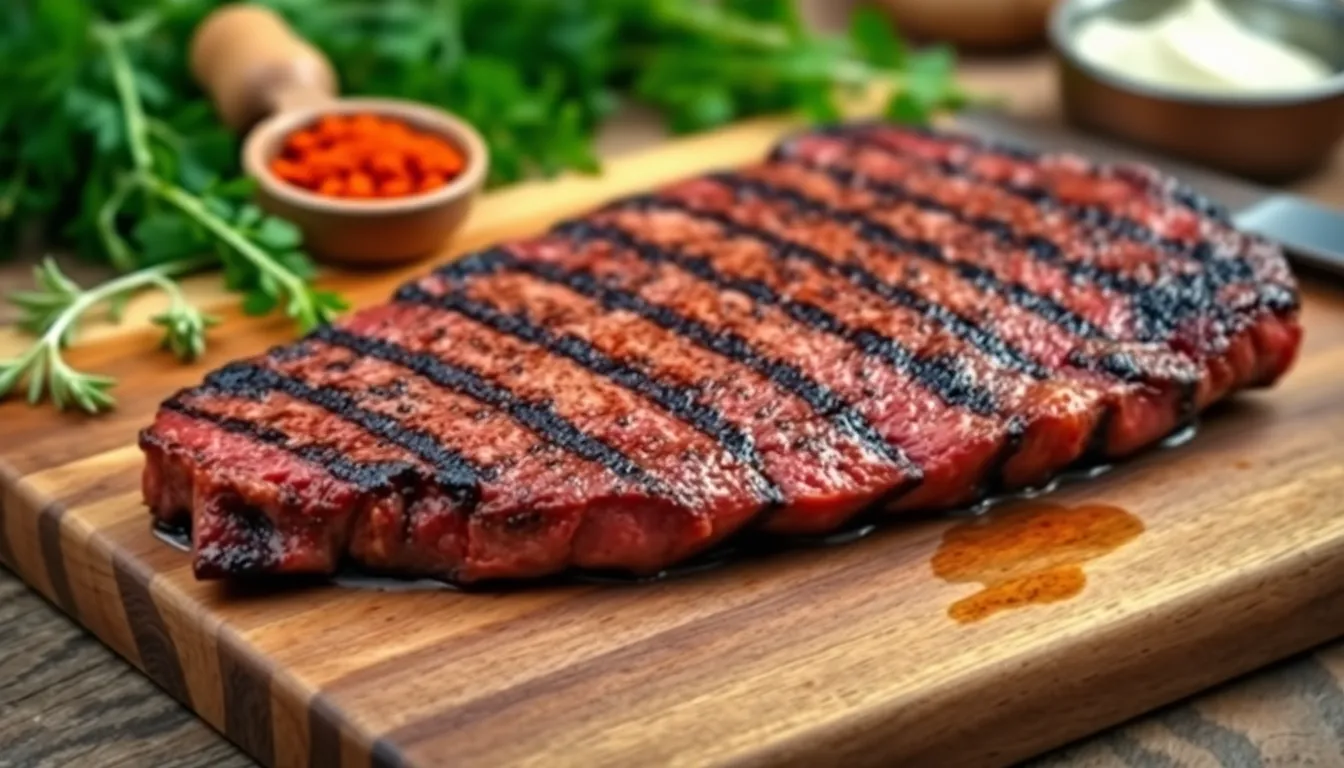Ribeye steak is a favorite for meat lovers, known for its rich flavor and tender texture. As people become more health-conscious, understanding the nutritional value of their favorite foods is essential. One key component many focus on is protein, a vital nutrient for muscle growth and overall health.
So, just how much protein can you expect from a ribeye steak? This article delves into the protein content of ribeye, exploring its benefits and how it fits into a balanced diet. Whether you’re a fitness enthusiast or simply enjoy a hearty meal, knowing the protein content can help make informed dietary choices.
Table of Contents
ToggleUnderstanding Ribeye Steak
Ribeye steak offers a rich source of flavor and nutrition, making it a favorite choice among meat enthusiasts. This section delves into the nutritional profile of ribeye steak, particularly focusing on its protein content and benefits.
Nutritional Profile of Ribeye Steak
Ribeye steak stands out for its nutritional density. A typical 3-ounce serving contains approximately 23 grams of protein, alongside essential nutrients such as:
- Iron: Approximately 2.4 milligrams, supporting red blood cell production.
- Zinc: Around 5 milligrams, crucial for immune function.
- Vitamin B12: Approximately 2.4 micrograms, vital for nerve health and DNA synthesis.
- Saturated Fat: Roughly 8 grams, contributing to flavor and calories.
These values illustrate ribeye steak as not only a protein source but also a rich contributor of key vitamins and minerals.
Benefits of Protein in Ribeye Steak
Protein in ribeye steak serves several important functions in the body. Key benefits include:
- Muscle Growth: Protein aids in muscle repair and growth, essential for athletes and active individuals.
- Satiety: High protein intake promotes fullness, potentially aiding in weight management.
- Metabolism Support: Protein enhances metabolic rate, facilitating calorie burning during digestion.
- Nutrient Absorption: Protein assists in the absorption of certain vitamins and minerals, maximizing nutritional benefits.
These aspects make ribeye steak a valuable addition to a balanced diet, especially for those focused on protein intake and overall health.
How Much Protein in a Ribeye Steak

Ribeye steak is a protein-rich choice, making it appealing for those targeting higher protein intake. The amount of protein in ribeye can vary based on several factors.
Average Protein Content per Serving
A typical 3-ounce serving of ribeye steak contains around 23 grams of protein. Variations exist, with some cuts offering slightly higher or lower protein levels. For example, a 4-ounce serving provides about 30 grams of protein. This protein content contributes significantly to an individual’s daily protein needs, making ribeye a valuable option for muscle maintenance and recovery.
Factors Affecting Protein Content
Several factors influence the protein content in ribeye steak:
- Cut Thickness: Thicker cuts generally contain more protein than thinner ones.
- Preparation Method: Cooking methods such as grilling or broiling may retain more protein compared to boiling or stewing.
- Fat Content: Ribeye steaks vary in marbling; leaner cuts may have a higher protein-to-fat ratio.
- Source of Beef: Grass-fed beef may contain different nutritional profiles compared to grain-fed varieties, affecting overall protein levels.
Understanding these factors can help consumers select the ribeye steak that best fits their dietary needs.
Comparing Ribeye Steak to Other Cuts
Ribeye steak offers a substantial protein content, but other cuts of beef also provide varying amounts. Examining these differences helps consumers make informed choices based on their dietary preferences and protein requirements.
Protein in Other Beef Cuts
Numerous beef cuts supply protein, each with unique characteristics. Here’s a comparison of protein content in common beef cuts per 3-ounce serving:
| Beef Cut | Protein (grams) |
|---|---|
| Ribeye | 23 |
| Sirloin | 22 |
| Tenderloin | 24 |
| Flank Steak | 25 |
| Chuck Roast | 20 |
| Ground Beef (80/20) | 22 |
These values highlight that ribeye is competitive in protein content. Cuts like flank steak and tenderloin can provide a similar or greater protein amount, but they differ in flavor and texture.
Nutritional Comparison with Other Meats
Ribeye steak’s protein content stands out against other meat sources. Here’s a comparison of protein per 3-ounce serving from popular meats:
| Meat Type | Protein (grams) |
|---|---|
| Ribeye Steak | 23 |
| Chicken Breast | 26 |
| Pork Loin | 24 |
| Salmon | 22 |
| Turkey Breast | 25 |
Similar to ribeye, chicken breast leads slightly in protein, followed closely by turkey and pork. However, ribeye steak delivers a rich flavor profile that appeals to many consumers, making it a favored choice despite variations in protein content.
Cooking Methods and Protein Retention
Cooking methods significantly influence both the flavor and nutritional profile of ribeye steak, particularly its protein retention.
Grilling vs. Pan-Frying
Grilling ribeye steak often enhances flavor while maintaining protein levels effectively. High-heat exposure from grilling can cause slight protein denaturation, but it doesn’t substantially impact overall protein content. Pan-frying also preserves protein while adding a crispy texture, although oil may influence calorie intake. Both methods provide excellent ways to enjoy ribeye steak without significant protein loss.
Impact of Cooking Time on Protein Levels
Cooking time can affect protein retention in ribeye steak. Short cooking times generally lead to minimal protein loss, while prolonged exposure at high temperatures may cause greater denaturation. For optimal protein retention, aim for medium-rare to medium doneness, which helps maintain moisture and preserve nutrients. Cooking ribeye steak to an internal temperature of 130°F to 145°F keeps it tender and flavorful while ensuring maximum protein benefits.
Ribeye steak stands out not just for its rich flavor but also for its impressive protein content. With around 23 grams of protein in a 3-ounce serving it offers a satisfying option for those looking to boost their protein intake. The essential nutrients found in ribeye further enhance its value as a dietary choice.
By considering factors like cut thickness and cooking methods, consumers can maximize the steak’s nutritional benefits while enjoying its tender texture. Whether grilled or pan-fried, ribeye steak remains a popular and nutritious option for meat lovers and fitness enthusiasts alike.






